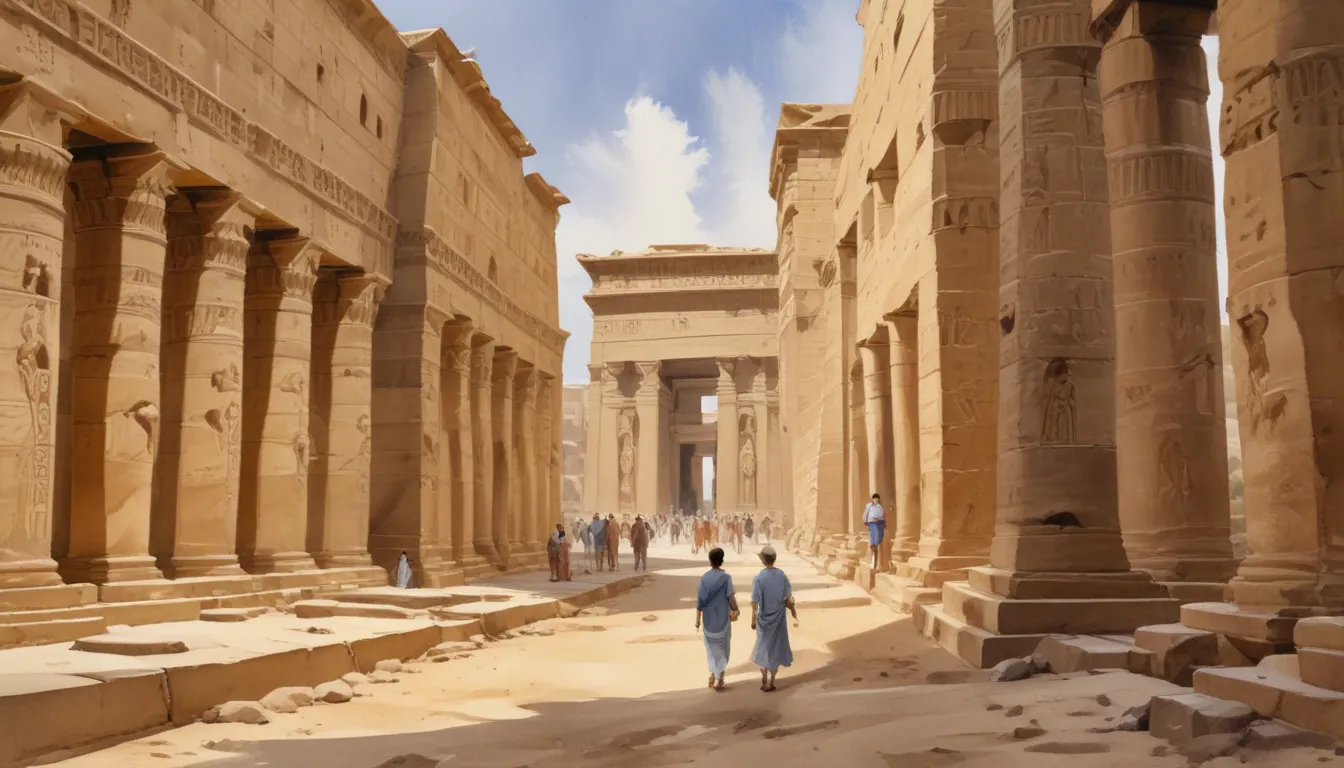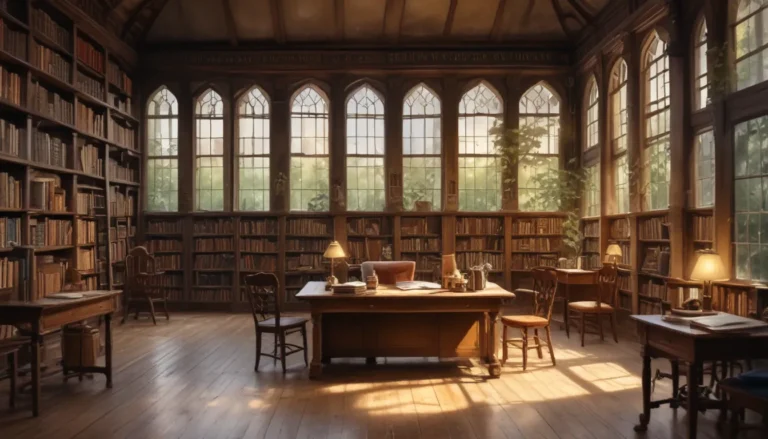The images in our articles are for illustrative purposes only and may not exactly match the content. They are intended to capture your interest and complement the text, not to replace it.
The Temple of Edfu, nestled in the heart of Upper Egypt, stands as a testament to the ingenuity and craftsmanship of the ancient Egyptians. Dedicated to the falcon-headed god Horus, this enigmatic landmark offers a window into the religious and cultural beliefs of a bygone era. Join us as we delve into the rich tapestry of history woven within the walls of this remarkable structure, exploring 20 intriguing facts that shed light on its significance and symbolic representations.
A Glimpse into Ancient Egypt:
- The Temple of Edfu, dedicated to Horus, stands as a well-preserved marvel from ancient Egypt’s Ptolemaic period.
- Visitors are treated to a visual feast of colossal pylons, a stunning hypostyle hall, and intricate reliefs depicting mythical battles.
- The temple serves as a time capsule, offering insights into ancient Egyptian religious practices and beliefs that continue to intrigue archaeologists and travelers alike.
Unveiling the Temple’s Secrets:
A Jewel of Preservation:
- The Temple of Edfu is renowned as one of the best-preserved ancient Egyptian temples, located in the city of Edfu in southern Egypt.
- Covering an expansive area of about 24,000 square meters, it stands as the second-largest temple in Egypt after the grand Karnak Temple.
A Tale Buried in Sand:
- Centuries of abandonment and the gradual accumulation of sand obscured the temple’s grandeur until French archaeologist Auguste Mariette rediscovered it in the 1860s.
A Monument of Time:
- Over 200 years were required to complete the construction of the Temple of Edfu, beginning during the reign of Ptolemy III and concluding under Ptolemy XII.
Discovering the Architectural Marvels:
Iconic Features:
- The temple is famed for its colossal entrance pylons standing at a towering height of 36 meters, embellished with intricate battle scenes and inscriptions showcasing Horus’s power.
- Within the temple lies a breathtaking hypostyle hall boasting 32 towering columns adorned with hieroglyphics and meticulously carved reliefs.
Sacred Sanctuary:
- Deep within the temple lies the sanctuary dedicated to Horus, where sacred rituals and ceremonies honoring the god were performed.
Mythical Depictions:
- Intricate reliefs adorn the temple walls, narrating the mythical battle between Horus, the god of order, and Seth, the god of chaos.
Journey Through Time:
A Pilgrimage Site:
- The Temple of Edfu served as a revered pilgrimage destination, drawing visitors from across ancient Egypt to pay homage to Horus and seek his blessings.
Divine Union:
- Mythology recounts the annual meeting between Horus and his wife, Hathor, at the Temple of Edfu during a special festival, symbolizing a divine celebration.
Celestial Connection:
- Astronomical scenes grace the temple’s roof, depicting celestial objects and constellations, underscoring the significance of astronomy in ancient Egyptian culture.
Unraveling Mysteries and Traditions:
The Mysteries of Horus:
- The Temple of Edfu played a pivotal role in religious rituals associated with the Mysteries of Horus, aiming to bring about the resurrection of the god.
Defacement and Preservation:
- During the Christian era, the temple suffered defacement as early Christians marred religious images and inscriptions, highlighting the challenges of preserving ancient structures.
Deciphering Hieroglyphics:
- The temple’s cartouche inscriptions, including royal symbols, were instrumental in deciphering the ancient Egyptian hieroglyphic writing system.
Experiencing the Legacy:
Maritime Importance:
- The Temple of Edfu houses a well-preserved Nilometer, a device crucial for monitoring the Nile River’s water levels to aid in agricultural planning and flood predictions.
Architectural Fusion:
- Displaying a unique Ptolemaic architectural style, the temple blends traditional Egyptian elements with Greek influences, showcasing a harmonious fusion of cultures.
Cultural Vignettes:
- Alongside religious and mythological reliefs, the temple’s walls depict scenes of daily life, historical events, and societal practices, offering a window into ancient Egyptian culture.
Timeless Charm:
- Today, the Temple of Edfu continues to attract visitors worldwide, drawn to its rich history, architectural splendor, and the enigmatic aura that envelops this ancient wonder.
Preserving the Past for the Future:
A Commitment to Conservation:
- Ongoing preservation and restoration initiatives safeguard the Temple of Edfu, ensuring its cultural legacy endures for future generations to appreciate and learn from.
Conclusion: Unraveling Ancient Mysteries
The Temple of Edfu stands as a mesmerizing portal to ancient Egyptian civilization, inviting us to explore its intricate details and symbolic narratives. From the grandeur of its pylons to the sanctity of its inner chambers, this temple beckons us to ponder the mysteries of the past. As we marvel at its architectural wonders and immerse ourselves in its rich historical tapestry, the Temple of Edfu serves as a timeless beacon of Egypt’s enduring legacy.
Unveiling More Wonders:
If the Temple of Edfu has captured your imagination, journey deeper into the realm of ancient Egyptian wonders. Explore the mystique of the Ptolemaic Kingdom through the captivating statue of its pharaoh, unraveling the secrets of a bygone era. Immerse yourself in the magnificence of Egypt’s pyramids, decipher the enigmatic hieroglyphs, and unravel the religious significance of other timeless temples that grace the Nile’s shores. Embark on a journey of discovery and enlightenment as you unravel the mysteries of Egypt’s ancient treasures.
FAQs: Unlocking Ancient Secrets
-
What is the significance of the Temple of Edfu?
The Temple of Edfu is dedicated to Horus, symbolizing divine kingship and protection in ancient Egyptian mythology. -
How old is the Temple of Edfu?
Constructed during the Ptolemaic period between 237 and 57 BCE, the temple boasts over 2,000 years of history. -
How long did it take to construct the temple?
The construction spanned approximately 180 years, a testament to the meticulous craftsmanship of ancient Egyptian builders. -
What is the Temple of Edfu’s architectural style?
Designed in the Ptolemaic style, the temple showcases grand entrance pylons, expansive halls, and a sanctuary steeped in religious symbolism. -
What is the current condition of the temple?
Remarkably well-preserved, the Temple of Edfu owes its condition to centuries buried beneath desert sands, shielding it from decay and destruction. -
Can visitors explore the temple’s interior?
Visitors are welcomed to traverse the temple’s halls, chambers, and sanctuaries, immersing themselves in its ancient allure. -
Are there special events held at the temple?
The annual “Feast of the Beautiful Reunion” celebration at the Temple of Edfu reenacts the mythical marriage of Horus and Hathor, a spiritual spectacle. -
Can visitors photograph inside the temple?
Photography is permitted inside the temple, though flash usage is typically prohibited to protect the ancient artworks and carvings. -
Is the Temple of Edfu easily accessible to visitors?
Situated in Edfu’s city in southern Egypt, the temple is easily reachable by car, tour buses, or Nile River cruises, beckoning history enthusiasts and travelers alike. -
Are there nearby attractions worth visiting?
The Temple of Kom Ombo and the Temple of Luxor, both in close proximity to the Temple of Edfu, offer further glimpses into Egypt’s ancient splendor, inviting exploration and discovery.
Explore the wonders of the Temple of Edfu and immerse yourself in the timeless allure of ancient Egypt, where history and myth intertwine to create a captivating tapestry of cultural treasures. As you tread in the footsteps of ancient pharaohs and gods, may the mysteries of the past unveil themselves, enriching your understanding and appreciation of this majestic civilization.
Inquiries and Submissions:
Your voice matters to us. Every fact shared on our site is a contribution from individuals like you, fostering a diverse tapestry of insights and knowledge. Our dedicated editors uphold the highest standards of accuracy and authenticity, ensuring that the information we present is not only captivating but also reliable. Join us in our pursuit of quality and trustworthiness as we explore and learn together.






